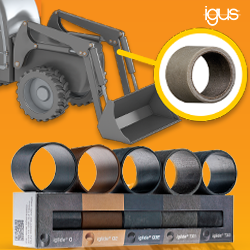Ease-of-use is a key element for improving maintenance pains for electronics manufacturers. When the robotic cell is designed for simplicity, it makes maintenance and management much easier for electronic manufacturers.
Making Robotic Systems Maintenance Easy at Kuka
Florence Acuna | KUKA Robotics
How can simplifying robotic design improve maintenance pains for electronics manufacturers?
Ease-of-use is a key element for improving maintenance pains for electronics manufacturers. When the robotic cell is designed for simplicity, it makes maintenance and management much easier for electronic manufacturers. Ultimately, this adds to lower costs and increased production efficiencies. This is especially true when the robot cells are designed for testing and inspection, handling, pick-and-place, loading and unloading, and assembly tasks – all of which are everyday tasks for electronic manufacturers.
Which features should the robotics sales team highlight in pitches to electronics manufacturers?
Sales teams should showcase that the robot is a fast, turnkey solution that is cost-competitive. Electronic manufacturers also need to see that the solution is flexible and customizable to their needs – they need to make sure what they’re investing in can adapt with their business needs. Lastly, it’s important to highlight the service behind the sale. Electronic manufacturers can tap dedicated support teams for guidance throughout the entire lifecycle of the robot, from installation to maintenance concerns.
What does KUKA do to support electronics manufacturers? What support services can robotics manufacturers offer to electronics manufacturers to ease the maintenance process?
At KUKA, we have a 24-hour emergency call center called Focus Hotline where manufacturers can call with any issues or concerns and receive real-time solutions. Additionally, the support from the sales team doesn’t stop when a purchase has been made – they constantly support the customers from initial request to implementing the robot on the factory floor.
To be successful, robotic manufacturers should offer a full support team for their customers to connect with for continued improvement for uses cases and troubleshooting.
Are there any new robotic technology or application designs due to be introduced to the market soon that are aimed at electronics manufacturers?
Robots are being built with ease-of-use in mind. Everything now is around data and AI, so robots are being built with these capabilities in mind so electronics manufacturers can more easily connect them with the other equipment on their factory floor and see results faster.
What specific pain points are electronics manufacturers experiencing with robotics? Are these myths electronics manufacturers are concerned about preventing them from adopting robots, or are these challenges they've encountered through their own experiences?
Electronics manufacturers are hesitant to adopt robots for a number of reasons. Some have trouble dedicating the time and energy needed to develop new lines that integrate robots into their processes, as well as the time needed to train employees to use them effectively. Others don’t want to fix what isn’t broken and aren’t convinced the overhead cost is worth the investment. And some manufacturers are still worried robots will take over humans’ jobs. But that’s far from the truth. While humans before were tasked with mundane roles, they can move to roles focused on improving the organization and processes as a whole when robots are introduced the factory floor.
Other than electronics manufacturers, do these challenges apply to other sectors?
Each sector has its own unique challenges, but most industries encounter these challenges in some facet or another. That’s why it’s important for robotics manufacturers to build solutions that can solve for these challenges and appeal to not just the electronic manufacturers, but others as well.
What’s in the works for KUKA in 2019?
In 2019, our clients will see a lot of new products and software from us. Our new robots will focus on faster pick-and-place arms as well as collaborative applications, which are especially important in the electronics market. We’re also working to identify new features to integrate into our applications and software that will add value to our customers.
.jpg) Flo Acuna is a technical account manager at KUKA Robotics. Flo has expertise in the automotive space and design for manufacturability practices. Before coming to KUKA, Flo worked with Tesla for nearly six years as a senior controls engineer.
Flo Acuna is a technical account manager at KUKA Robotics. Flo has expertise in the automotive space and design for manufacturability practices. Before coming to KUKA, Flo worked with Tesla for nearly six years as a senior controls engineer.
Flo earned her bachelor's degree in electrical and computer engineering from California State Polytechnic University in Pomona.
The content & opinions in this article are the author’s and do not necessarily represent the views of RoboticsTomorrow
Comments (0)
This post does not have any comments. Be the first to leave a comment below.
Featured Product

